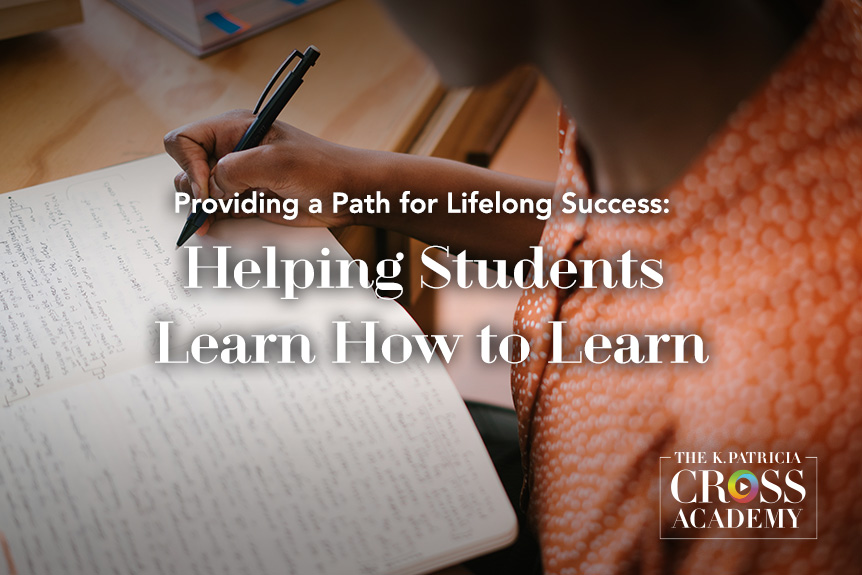
Students will be better prepared to succeed in today’s complex and quickly changing world if they understand how they learn and can manage their own learning. Metacognition is a higher-order thinking process that involves active control over mental processes. Researchers and instructors alike have recognized the need to intentionally weave metacognitive strategies into teaching and learning activities. Metacognitive activities guide students through the process of reflecting on what they have learned, evaluating the efficacy of their own learning strategies, and synthesizing the meaning of not only of what they have learned but also how well they learned it. Learning how to learn is important to student success. We offer the following tips on how to help students:
Encourage students to view academic success as something that can be attained through hard work
Encourage the perspective of a growth mindset. If students view success as something they can achieve with hard work, they are more likely to be willing to engage.
Emphasize positive self-talk
Students need an optimistic attitude toward learning. If they say for example, “I’m just not smart enough,” they won’t be able to self-managed because they have already self-defeated. Encourage and use expressions like “I can learn with adequate effort and use of appropriate strategies” instead.
Model learning how to learn yourself
If you demonstrate not only enthusiasm for teaching but also share how you use metacognition and self-regulation in your own work, it will give students an example to follow. You can also ask students to share their own strategies.
Create “learning how to learn” outcomes
Fink, who has learning how to learn as one of the key domains in his taxonomy of student learning, suggests that student learning experiences will be improved when the instructor focuses on helping them build the skills they will need. This begins with outcomes.
Teach students how to study
We often believe that students will have learned to study in high school; unfortunately, this is not the case for all students. We can structure activities that provide scaffolding to students to learn to read carefully, take notes, and review. Many of our teaching techniques do just this.
Provide students with opportunities to think intentionally about their learning
Students need to think through the learning process, from start to finish. You can provide them with opportunities to assess the demands of a task, evaluate their own knowledge and skills, plan a learning approach, monitor their progress, and adjust their strategies as needed. Structuring such opportunities will help them learn not only in your course but also beyond.
For information about active learning techniques that prompt students to think about their learning, see our videos for the following techniques:
• Lecture Wrapper
• Lecture Engagement Logs
• Post-Test Analysis
• Invent the Quiz
• Personal Learning Environment
Suggested Citation
Barkley, E. F., & Major, C. H. (n.d.). Learning how to learn. CrossCurrents. https://kpcrossacademy.org/learning-how-to-learn/

Engaged Teaching
A Handbook for College Faculty
Available now, Engaged Teaching: A Handbook for College Faculty provides college faculty with a dynamic model of what it means to be an engaged teacher and offers practical strategies and techniques for putting the model into practice.





